
Second act
Discontent with the slower pace of retirement, Tanya Bryant, along with her two daughters and the help of USPTO educational resources and pro bono legal assistance, turned an idea brainstormed at the dinner table into a business with a patent and registered trademark.
13 min read
Each month, our Journeys of Innovation series tells the stories of inventors or entrepreneurs who have made a positive difference in the world. This month, we focus on Tanya Bryant, who worked with her daughters to build their family-owned business, Netcessity.
In 2016, after three decades as a dedicated project manager guiding new initiatives from concept to execution, Tanya Bryant retired. Along with her work, she left behind a demanding routine of juggling multiple details on a daily basis. The transition to a slower pace wasn't easy for her, and it left a bit of a void.
“Retirement was a challenge for me,” says Bryant, who for many years imagined that she would enjoy retiring early. “My days weren't full enough for me. Although I was doing things, they just weren't full enough.”
That winter, her eldest daughter Sarah came home to St. Louis, Missouri, for the holidays. With Sarah visiting from Denver, Colorado, and Bryant’s younger daughter Anna still living in the area, the whole family was able to rekindle a longstanding ritual of gathering for dinner. With their two daughters, Tanya and her husband Charles would share lively conversations about their days, their spirituality, and the universe. More often than not, however, the family gravitated toward problem-solving.
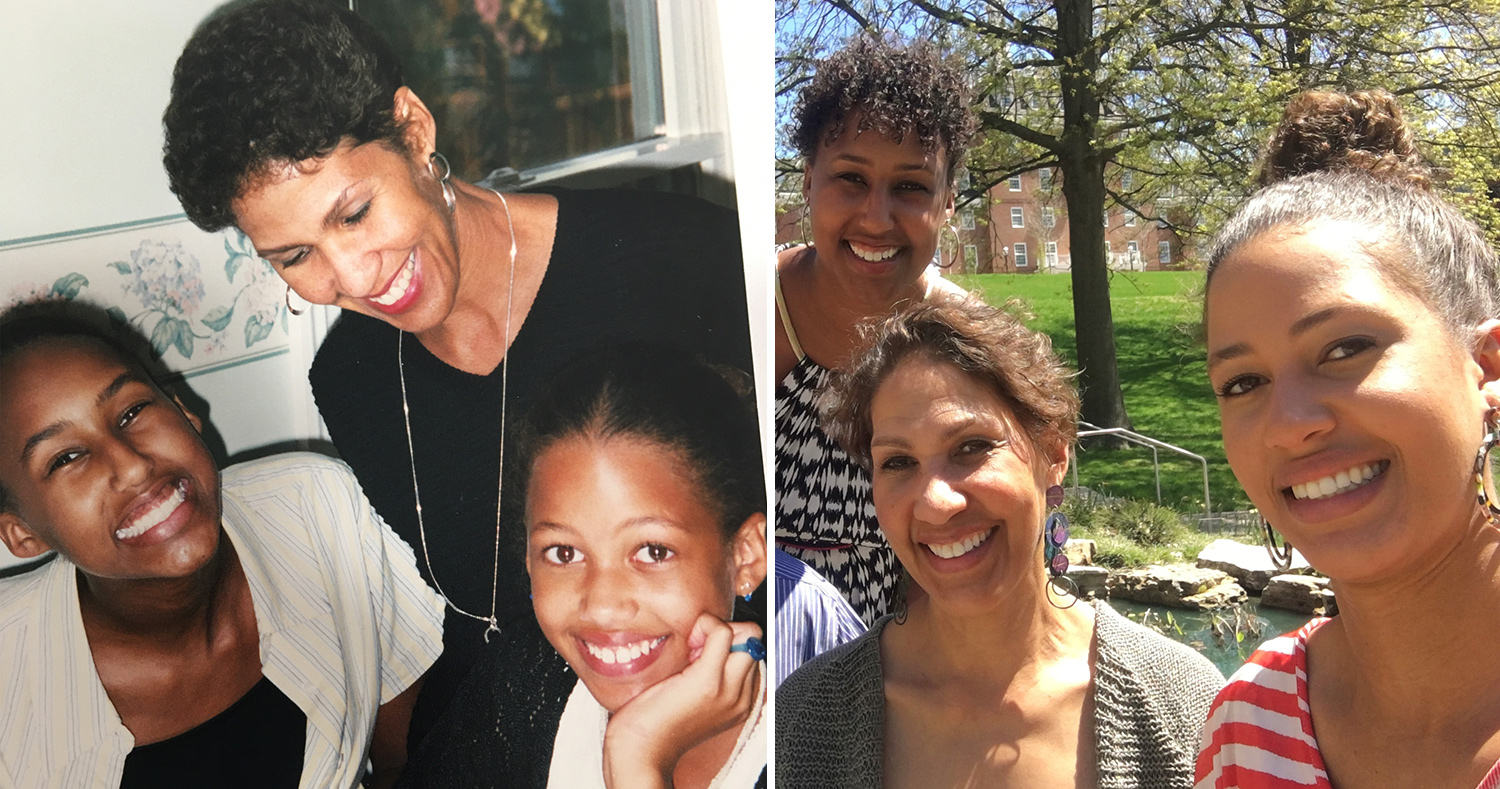
On left, from left to right: Sarah, Tanya, and Anna Bryant at their home in 1998, celebrating Anna’s birthday.
Next, from left to right: Sarah, Tanya, and Anna in a park near their St. Louis home in 2019. The women said they have always been a close-knit family and valued time together. They enjoyed mentally stimulating group activities, like walks and brainstorming innovative solutions to common problems. One of their innovative ideas took root with Netcessity after Tanya retired and was able to dedicate the time to see it through to fruition. (Courtesy of Tanya Bryant)
On an evening in early 2017, for example, they honed in on something that was a daily nuisance to both Anna and Sarah.
“It was one of those days that I came over to Mom and Dad's after work,” says Anna. An agitation lingered from her morning commute, something that almost anyone who has had to slam the brakes in traffic with a seat full of personal belongings next to them has experienced. “All of my things had fallen on the floor; my purse, my lunch, my coffee, whatever was on my front seat.” Lightly chuckling at her own distress, she says, “I was ready to talk about something to fix that problem.”
Sarah immediately related to this experience and confirmed that she shared her sister’s frustration during her own commute to work. “I can't get past the main intersection from my neighborhood without something falling on the floor, because somebody [ahead of me] would stop suddenly,” Sarah says, recalling how her briefcase, extra-large water bottle, and lunch would clatter to the floorboard.
The family began to muse about how to prevent this common annoyance, and excitement built as they considered different ways to secure loose items on a passenger seat. Then, the dinner ended and the family moved on from the idea—all except for Tanya.
She was looking for something to fill her newfound free time, and building a product and a brand would do just that. Unintimidated by the amount of energy and research this project would require—having managed many during her previous career—she was inspired to get started.
“I became very available to start working on what we created as our small business,” she says. “[Retirement] allowed me to really get engaged in that, entrenched in it.”
Her excitement inspired the rest of the family as she sketched product designs, and together they brainstormed about the materials they needed to bring their idea to life.
For the prototype of what would eventually become the Netcessity seat caddy, Bryant cut out the cargo netting from the trunk of her car. Then, the family collected the rest of the supplies, including buckles, elastic, grommets, and more netting.
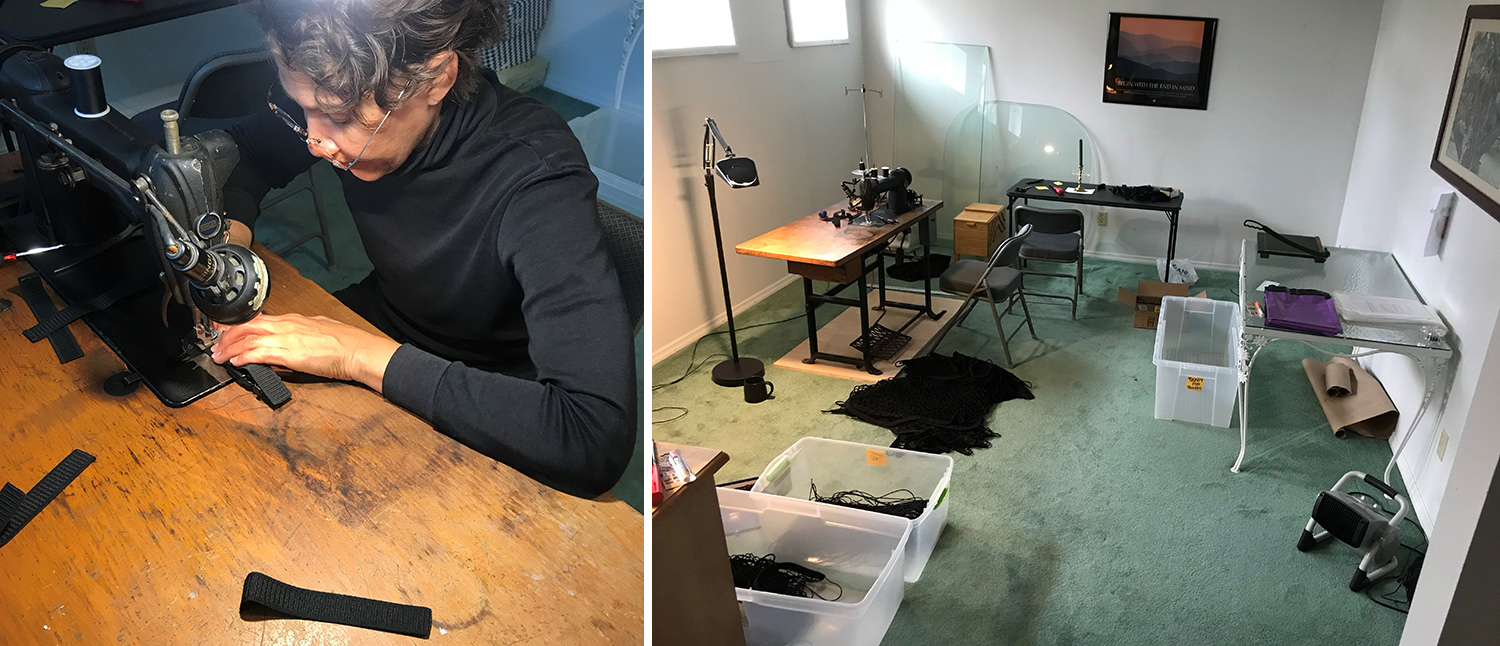
Tanya Bryant stitches prototypes of her family’s innovative seat caddy in early 2017. She used her mother’s vintage industrial Singer sewing machine in her home workshop, channeling her parents’ entrepreneurial spirt. Her mother once used the same machine to sew upholstery for the family’s interior decorating business. (Courtesy of Tanya Bryant)
With the provisions gathered, Bryant settled into her basement workshop with one more critical component: her mother’s vintage industrial Singer sewing machine which allowed her to stitch through the thick materials.
For her, the sewing machine was much more than an essential tool to create prototypes. It was a reminder of her own parents’ innovative spirit. “My father was actually an interior decorator and [my mother] would create all the things that he sold to his clients,” says Bryant. “I saw my mother working on that machine for years.”
The cherished sewing machine was a bit worn down, but Bryant stitched away with her daughters at her side. Together, they created their first prototype. Anna would melt the frayed cut ends of the elastic bands, which Sarah would then thread through the netting.
By spring 2017, their prototype was ready for testing. The three Bryant women installed the nets in their cars and filled them with any cargo they could find—especially large, heavy, oddly shaped objects. Then, they drove around and put their product to the test.
Looking back, Bryant recalls how seriously Sarah took the product testing phase. “She actually put a watermelon inside of one.” The three women still laugh at the memory of Sarah driving around the city with a giant watermelon riding shotgun.
Once they saw how well their seat caddy worked, the family began producing and packaging it for sale. They even had a name in mind, courtesy of Anna. After a short brainstorming session with the family, Anna thought: "It's a net and it's a necessity." The name “Netcessity,” which would later receive a trademark registration, was born.
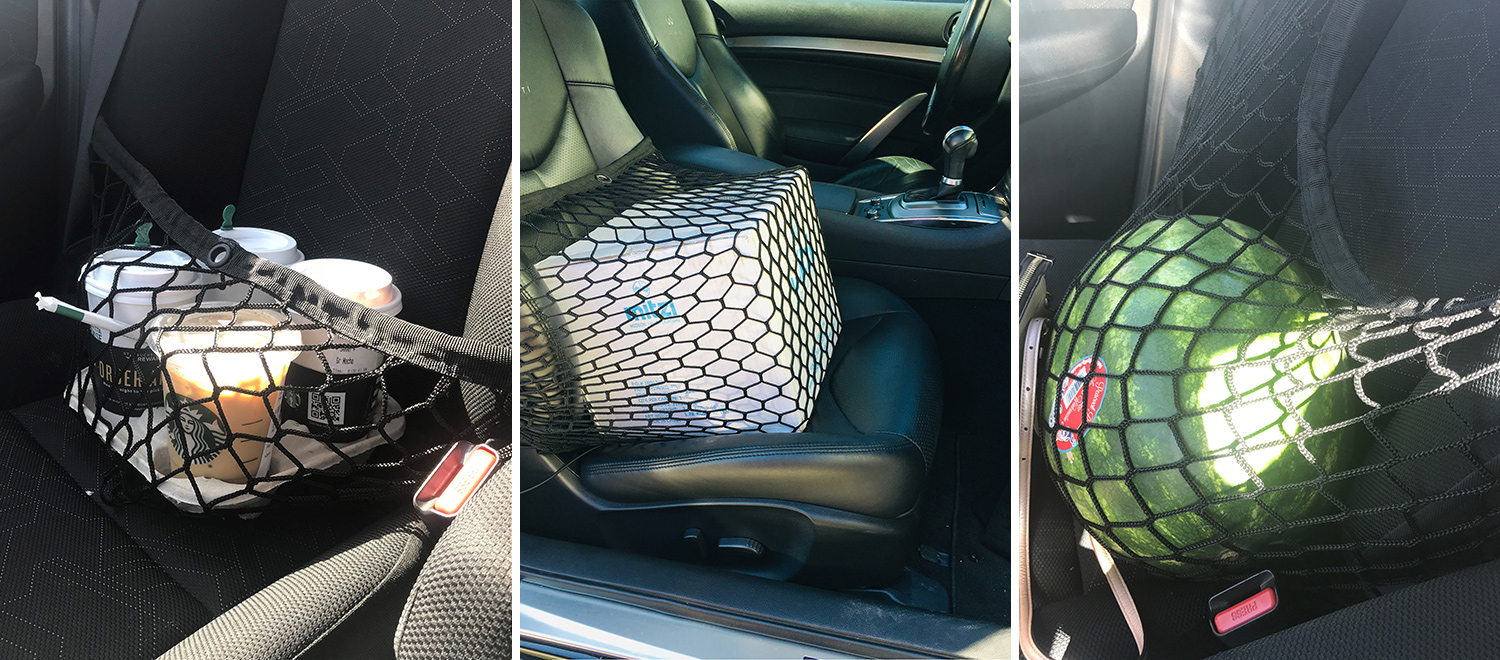
The Netcessity seat caddy was initially tested with various passenger seat cargo, including cups of coffee, a box, and even a watermelon. It was important to the Bryant family that they thoroughly test their invention before taking it to market as a finished product. (Courtesy of Tanya Bryant)
At this point, Bryant thought back on her experience working with entrepreneurs during her career in project management and of the importance of protecting newly developed ideas as intellectual property (IP). Simply going to market with a product that didn’t have a patent or a registered trademark for their brand could be a mistake, and there were a lot of unanswered questions about how or if they could receive protection for their IP.
Nevertheless, Bryant had a strong feeling that the family’s product was unique and worthy of protecting, and she knew that they needed to patent the brand’s namesake invention. A quick internet search about how to file for a patent led her to the U.S. Patent and Trademark Office’s (USPTO) website. After exploring the website, she concluded that filing a provisional patent application would make the most sense for her family’s proposed business. Provisional patent applications allow you to file without a formal patent claim or an oath or declaration, and they also do not include a list of previously published patents and patent applications relevant to an invention (known as prior art).
In May 2017, the Bryants submitted a provisional patent application, which gave them a filing date, the ability to use the term “patent pending,” and twelve months to determine if they wanted to file a nonprovisional patent application.
Bryant then immersed herself in learning all she could about the nonprovisional patenting process, using the USPTO website as her guide.
While Bryant was doing what she could to ensure the success of her patent application, it was clear that professional help would aid the process. The cost of hiring an IP attorney, however, can be a significant expense to individual inventors or small businesses like Bryant’s, so she explored pro bono options and learned about the pro bono IP law clinics across the country.
Pro bono IP law clinics provide no or low-cost support for patentees with limited resources. In May of 2017, Bryant tried to get a law clinic to take her family’s case. Unfortunately, they were told that their product was likely not patentable because it did not seem unique enough. Sarah remembers insisting that, “This doesn't exist. Like if it exists, let me know and I’ll buy one.”
Any inventor will tell you that resiliency matters, and Bryant was confident that their invention was novel based on her own prior art searches. “We believed we had something worthy of submitting,” she says. So, she continued to the move the process forward on her own, using resources and guidance from USPTO.gov.
One of the most significant resources Bryant discovered was the USPTO’s Pro Se Assistance Program, which is dedicated to helping independent inventors and small businesses protect their IP by providing outreach and education to applicants who file patent applications without the assistance of a registered patent attorney or agent (also known as pro se, a Latin phrase meaning “for one’s self” or “on one’s own behalf”).
Almost a year after submitting the provisional application, Bryant drafted and submitted the nonprovisional patent application all on her own, making her a pro se applicant. Her application was then assigned to a patent examiner in the Pro Se Examination Unit. Examiners in that unit work specifically with pro se applicants who are new to the patent process.
Though not able to provide legal advice, the examiner assigned to her application informed Bryant of her options at each step of the patent prosecution process, allowing her to make informed decisions. According to her examiner, Bryant’s focus and dedication to the process made her stand out from other applicants.
Bryant knew that applying for a patent was a back-and-forth process with the USPTO, and that the language used in the application could make all the difference between receiving a patent or not. “I jumped in and started working, looked at other patents and how they were written and what the language was, every question that needed to be answered to file that application accurately,” Bryant says.
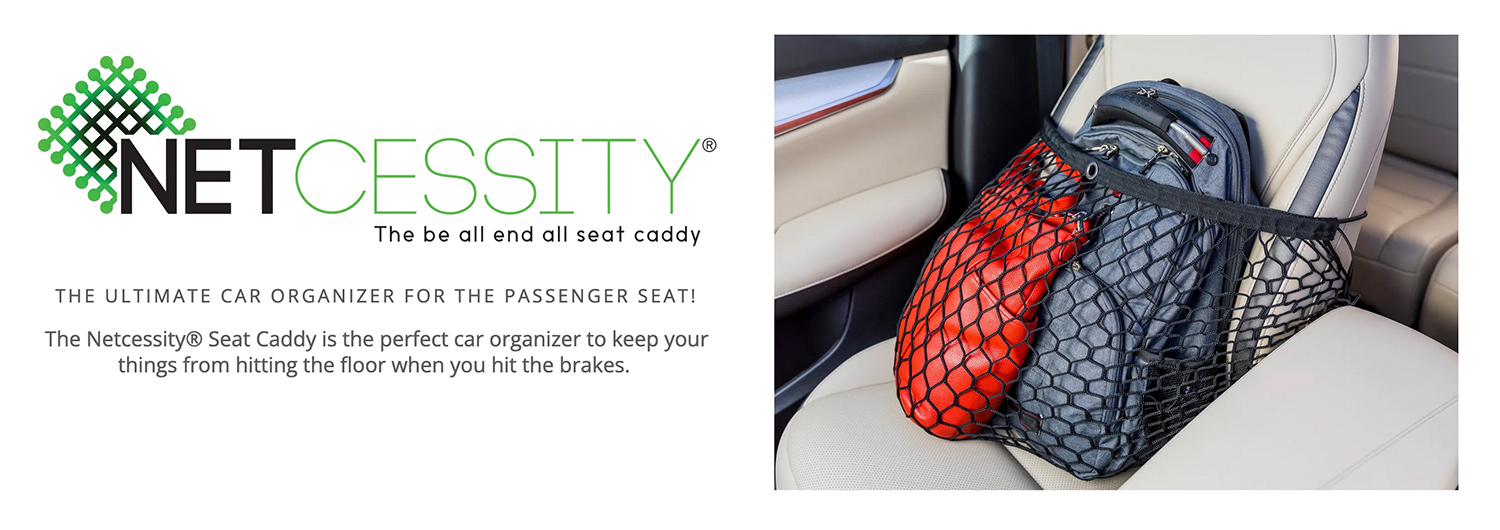
After receiving a patent in 2021, the Bryants turned to protecting their brand. Netcessity became a registered trademark in August of 2022. The name was inspired by Anna Bryant. After hearing a few suggestions that didn’t quite stick, she thought, “It’s a net, and it’s a necessity,” and the name Netcessity was born. (Photo Courtesy of Brandon Mueller)
Not only did Bryant dive into the details of the patent language, she was also intimately involved in the design drawings for her patent, if unintentionally. She had sketched the drawings for the provisional patent application, with the expectation that they would be updated later. “I was working with a template of a car seat, tracing paper, and a flashlight under a glass table,” Bryant recalls. As it turned out, the drawings would remain the same in the final patent application.
As she worked diligently to update the claims and detailed language of her patent application, Bryant was also focused on building a brand that would be the underpinning of their fledgling business. Shortly after filing their patent application in April 2018, the Bryants began selling their product using the name Netcessity, knowing that eventually they would benefit from trademark protection. They felt it was important to first prove they had a viable, patent-protected product as the foundation of their business before filing for a trademark. In anticipation of a future trademark, however, they searched for anything with a similar name, just in case. There was one, but it had expired a few years earlier.
In March 2020, several years after beginning the patent application process, the Bryants received an office action saying their patent had been rejected. Bryant struggled with how to make her claims stronger, and she turned to the pro se examiner who had been guiding her through the process for help.
The examiner advised her that having strong legal proceedings would positively impact the quality of her final patent. So, Bryant reached back out to a regional pro bono IP law clinic at the University of Illinois at Chicago School of Law, for help with amending and strengthening her claims.
“I went back and said, ‘Hey, you know, in all transparency, this got rejected initially. I've taken it this far, honestly, [I] don't know how to respond to this again. Help me,’” she recalls. This time the clinic said yes, and a law school student helped them complete the remainder of the patent application process. After years of research, multiple application drafts, hours of telephone calls, and product tests with oddly shaped objects, the Bryants earned U.S. Patent No. 11,001,203 for a “Passenger seat cargo net” on May 11, 2021.
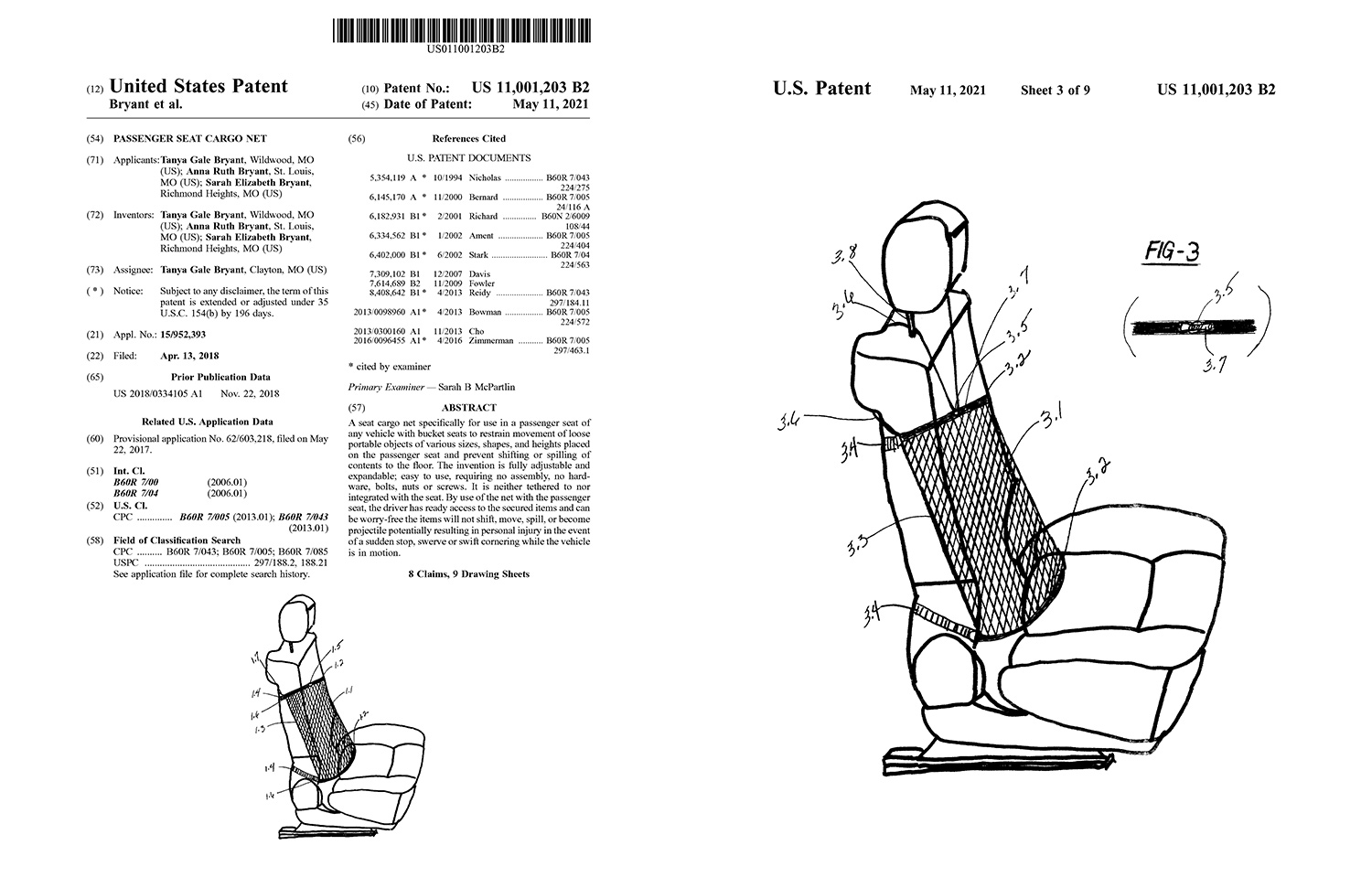
U.S. Patent No. 11,001,203 for a “Passenger seat cargo net.” Bryant drafted the basic design drawings as part of her provisional patent application, and to her surprise they remained in the issued patent. The patent resulted from countless hours of work by Bryant and her family as well as support from USPTO pro se patent examiners and volunteers of the Pro Bono IP Law Clinic at the University of Illinois at Chicago School of Law.
The family believes they would not have received a patent without their tenacity, innovative spirit, resilience, and, of course, Bryant’s strong work ethic that she earned after a lifetime in project management.
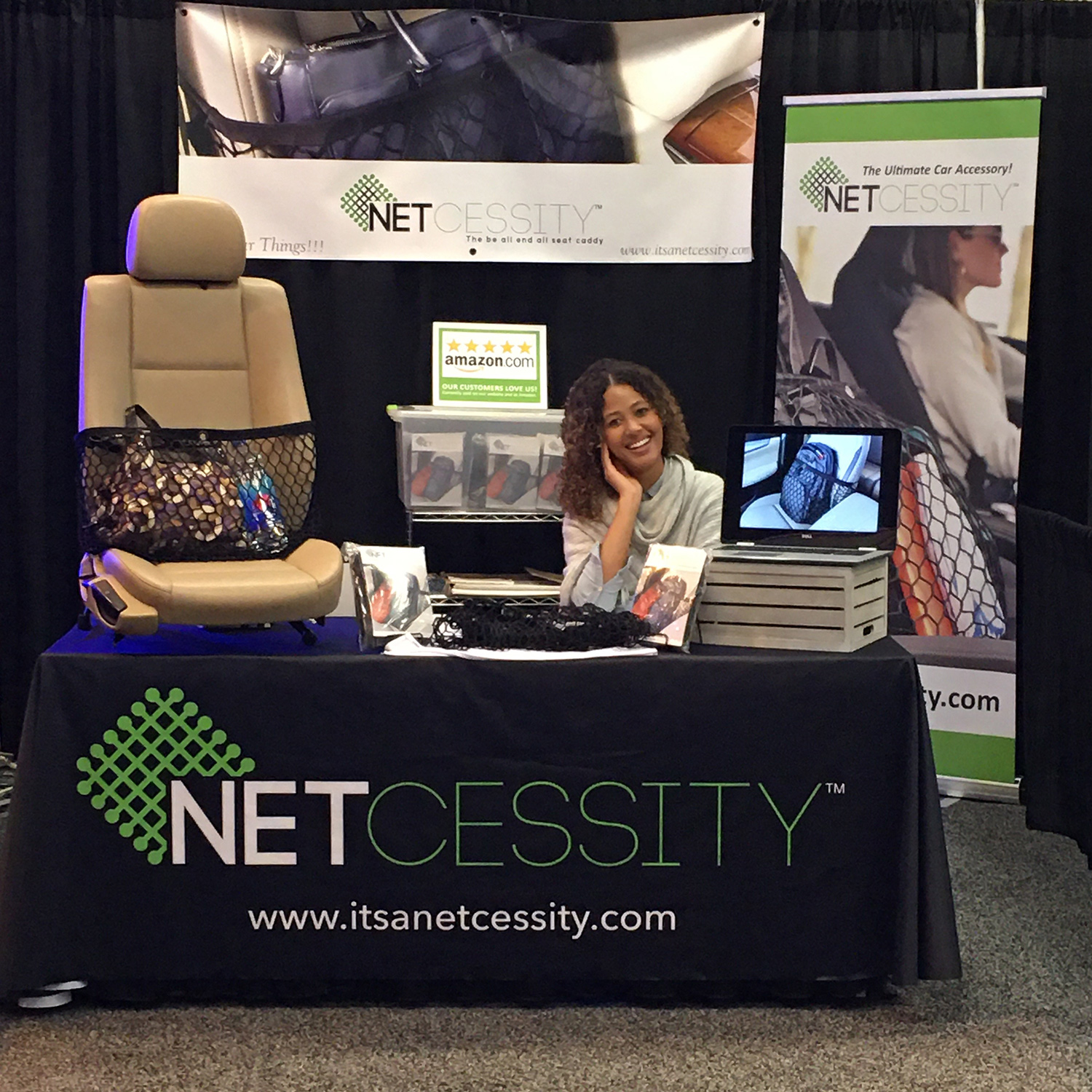
Anna Bryant, co-founder of Netcessity, staffs the family’s booth at the St. Louis Auto Show in 2022. The Bryants began selling their product once they submitted a provisional patent application. After they received a patent and a trademark, they focused more on marketing their product and growing their brand through social media. (Courtesy of Tanya Bryant)
“I feel like [the patent] makes it more legit,” her daughter Anna says. “When you are working with potential partners and wanting to put your product in front of consumers, [you want] to be able to say, ‘This is a fully patented product.’”
With their patent in hand and a viable business, the family switched gears to protecting the Netcessity brand name as a registered trademark. Drawing from their experience of working with law clinics on their patent application, the Bryants applied to half-a-dozen clinics for assistance with their trademark application. The Lisa Foundation Patent Law clinic accepted them, and on March 25, 2022, less than a year after receiving their patent, their trademark application was filed. Just over four months later, on August 2, 2022, Netcessity became a registered trademark.
It’s been several years since the idea for Netcessity first took shape, and Bryant realizes that her free time as a new retiree likely allowed them the opportunity to grow this new business. “If I was still involved in my career, I don't know that we would've gotten as far,” she says. “The pro se process was time consuming, and you had to be diligent and detail-oriented. All of those things are skillsets that I do possess, and it's the reason why we got as far as we did, I think.”
Bryant also credits the support she received from the USPTO and the IP law clinics as instrumental to her success. “The USPTO made all the difference to us in terms of getting the credibility behind our product that we wanted patented and now trademarked,” she says. “I'm just grateful to have had that support. Going forward, our dream is for this to be in every car that's on the road. So, we've got a lot of work to do.”
To learn more about how you can protect your next great idea, check out the Inventor and entrepreneur resources page on the USPTO website. There you can learn about the basics of intellectual property, trademarks, and patents, as well as free resources near you.
Credits
Produced by the USPTO’s Office of the Chief Communications Officer. For feedback or questions, please contact inventorstories@uspto.gov.
Story by Candace Mundt-Bates with additional contributions from Jay Premack and Lauren Emanuel. Special thanks to Tanya, Sarah, and Anna Bryant, as well as Sarah McPartlin.
The photograph at the beginning of this story, courtesy of Tanya Bryant, shows, from left, Tanya and her two daughters, Anna and Sarah, during Thanksgiving on November 24, 2022. The family cherishes their time together around the dinner table. For them it’s a reminder of the many wonderful meals and conversations that have come before, one of which led to their family business, Netcessity.
Photos on the USPTO homepage and throughout this story are also courtesy of Tanya Bryant, unless otherwise noted in the caption.



